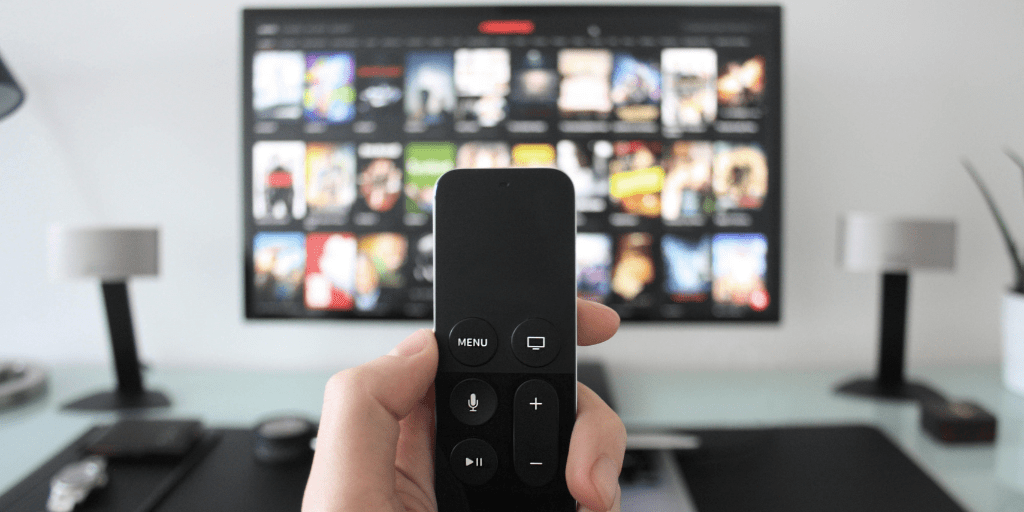What is IPTV and How Does It Work?
IPTV, or Internet Protocol Television, is changing how we watch TV. Instead of using antennas or satellite dishes, IPTV streams content over the internet. This means you can watch your favorite shows on various devices like smartphones, tablets, and smart TVs. IPTV offers a mix of live TV, video on demand, and time-shifted viewing, giving you more control over what you watch and when you watch it.
Key Takeaways
- IPTV uses the internet to stream TV content, unlike traditional TV that uses antennas or satellite dishes.
- You can watch IPTV on multiple devices, including smartphones, tablets, and smart TVs.
- IPTV offers different services like live TV, video on demand, and time-shifted TV.
- While IPTV provides more flexibility and options, it also has drawbacks like needing a stable internet connection.
- Choosing the right IPTV provider involves considering factors like service quality, internet speed, and available content.
Understanding IPTV Technology
Definition of IPTV
IPTV, or Internet Protocol Television, is a way to deliver television content over the internet. Unlike traditional TV, which uses satellite or cable, IPTV uses the internet to stream content. This allows for more flexibility and a wider range of viewing options. IPTV can include live TV, video on demand (VOD), and time-shifted TV.
Key Components of IPTV Systems
IPTV systems have several key components:
- Content Source: This is where the TV shows, movies, and other content come from.
- IP Network: The internet connection that delivers the content to your device.
- Set-Top Box: A device that decodes the IPTV signal so it can be displayed on your TV.
- Middleware: Software that manages the delivery of content and user interface.
Differences Between IPTV and Traditional TV
There are several differences between IPTV and traditional TV:
- Delivery Method: IPTV uses the internet, while traditional TV uses satellite or cable.
- Flexibility: IPTV offers more viewing options, such as VOD and time-shifted TV.
- Network Type: IPTV often runs on a closed network, while traditional TV does not.
IPTV broadcasts started gaining usage during the 2000s alongside the rising use of broadband-based internet connections. Its popularity is rising due to accessible high-speed internet and the flexibility it provides compared to traditional TV.
How IPTV Works
IPTV Architecture
IPTV operates on an IP network, delivering audio and video content to users. Unlike traditional TV, which uses broadcast signals, IPTV streams content through the internet. This allows for a more flexible and interactive viewing experience. The architecture includes servers that store content, a distribution network, and user devices like set-top boxes or smart TVs.
Role of Set-Top Boxes
Set-top boxes are crucial for IPTV. They receive IP signals from the provider and convert them into a format that your TV can display. When you select a show, the set-top box sends a request to the server, which then delivers the content to your screen. This process ensures that you get a seamless viewing experience.
Content Delivery Process
The content delivery process in IPTV involves several steps:
- Content Encoding: The video content is encoded into IP packets.
- Data Transmission: These packets are sent over the internet to a local node in your area.
- Signal Reception: The signal travels to your home, usually through fiber optic cables.
- Decoding: Your set-top box or device decodes the signal, allowing you to watch the content.
IPTV’s ability to deliver content through the internet makes it a versatile option for modern viewers.
Types of IPTV Services
Live Television
Live IPTV allows users to stream television broadcasts in real-time, similar to traditional TV. This service is often used for live events like sports and conferences. However, it shares the same downside as cable TV: users can’t choose when to watch content. Some examples of IPTV providers with this model include FOX Sports Go, Hulu Live TV, Sling TV, and CBS Sports HQ.
Video on Demand (VOD)
VOD IPTV services let users watch videos whenever they want. You pay a subscription fee and get access to a large library of videos. Popular examples of VOD services include Netflix, Hulu, and Amazon Prime Video. This model is similar to what most OTT providers offer.
Time-Shifted TV
Time-shifted TV allows users to watch shows they missed at a later time. This service is different from VOD because the content has a limited shelf life. For example, you can’t watch an episode from several years ago. BBC’s iPlayer is a popular time-shifted IPTV service in the UK.
IPTV offers many additional services and video formats beyond just watching traditional television broadcasts. There are three primary content formats most IPTV services offer: Live TV, Video on Demand, and Time-Shifted TV.
Advantages and Disadvantages of IPTV
Benefits of IPTV
IPTV offers several benefits that make it a popular choice for many users:
- Easy to Set Up and Use: All you need is a set-top box and a TV. Newer models with Wi-Fi make the process even simpler.
- 100% Digital: As the world moves towards digital, IPTV provides a solid foundation for future technologies.
- Simultaneous Streaming: IPTV allows you to stream multiple programs at the same time on different devices.
- Variety of Service Types: There are multiple types of IPTV services to fit different tastes.
- Commercial-Free Experience: Many people dislike ads, and IPTV lets you skip or fast-forward them.
- Time-Efficient: You don’t have to wait for specific times to watch your favorite shows, and you can skip commercials.
Drawbacks of IPTV
Despite its many benefits, IPTV also has some drawbacks:
- Network Overloads: If too many people watch the same show at once, the network can get overloaded, causing buffering or playback issues.
- Limited Control Over Channels: If there’s an issue with a channel, there’s not much you can do but wait for it to be fixed.
- Synchronization Problems: Fluctuations in network speed can cause synchronization issues, affecting the viewing experience.
- Bandwidth Requirements: IPTV needs a certain amount of bandwidth to work well. If your internet is slow, the quality will suffer.
Comparing IPTV to OTT Services
IPTV and OTT (Over-The-Top) services both offer digital streaming, but they have some key differences:
| Feature | IPTV | OTT |
|---|---|---|
| Delivery Method | Private Network | Public Internet |
| Quality | Generally Higher | Varies |
| Control Over Content | More Control | Less Control |
| Cost | Can be more affordable | Often more expensive |
While IPTV has its challenges, its advantages often outweigh the disadvantages. This is especially true in a market with so much potential for growth.
IPTV Market and Adoption
Global Market Trends
The IPTV market has been on a continuous growth path in recent years. The global IPTV market size was valued at USD 68.78 billion in 2023 and is projected to grow significantly. This growth is driven by the increasing demand for IPTV services, which is rising at an annual rate of 16.8%–17.0% globally. The market is expected to reach USD 115.2 billion by 2026, growing at a CAGR of 17.8%.
Regional Success Stories
IPTV is most popular in countries like the United States, Canada, China, and the U.K., which currently have the largest IPTV market share. India is the fastest-growing IPTV market and is expected to surpass its European counterparts in a few years. By the end of 2022, China had around 179.7 million IPTV subscribers, while India had around 68.1 million subscribers.
Future Projections
The future of IPTV looks promising, with the market expected to be worth over $105 billion by 2029. The rise in digitalization and the increased use of mobile devices are fueling the growth of both OTT services and the IPTV business. As technology continues to advance, the IPTV market is likely to see even more significant growth in the coming years.
Choosing an IPTV Provider

Factors to Consider
When selecting an IPTV provider, there are several important factors to keep in mind:
- Channel Selection: Ensure the provider offers a wide range of channels that suit your preferences.
- Reliability: Look for a provider known for stable and consistent service.
- Device Compatibility: Check if the service works with your devices, such as smart TVs, smartphones, or set-top boxes.
- Customer Support: Good customer support can make a big difference in resolving any issues quickly.
- Pricing: Compare the costs and see if they fit within your budget.
Top IPTV Providers
Here are some of the top IPTV providers you might consider:
| Provider | Notable Features |
|---|---|
| Xtreme HD IPTV | High-definition channels, reliable service |
| Bestbuy IPTV | Affordable pricing, good customer support |
| Comstar | Wide range of channels, VOD options |
| Apollo Group TV | Premium content, multiple device compatibility |
| Necro IPTV | Extensive channel list, competitive pricing |
| Tubi | Free service, ad-supported |
| Vudu | Large library of movies and TV shows |
| The Players Klub | Sports channels, international content |
| Falcon TV | High-quality streams, diverse channel selection |
| IPTVtune | User-friendly interface, reliable performance |
Evaluating Service Quality
To ensure you get the best viewing experience, consider these tips:
- Test the Service: Many providers offer free trials. Use these to test the service quality and channel selection.
- Read Reviews: Look for customer reviews and ratings online to gauge the provider’s reputation.
- Check for Updates: Ensure the provider regularly updates their content and software to avoid any disruptions.
- Customer Support: Test the responsiveness of their customer support by asking a few questions before subscribing.
Choosing the right IPTV provider can greatly enhance your viewing experience. Make sure to do thorough research and consider all the factors mentioned above.
Technical Requirements for IPTV

Internet Speed and Bandwidth
To enjoy IPTV, you need a fast and stable internet connection. For standard definition (SD) streaming, a minimum speed of 3 Mbps is required. For high definition (HD) streaming, at least 5-8 Mbps is necessary. If you want to stream ultra-high definition (UHD) or 4K content, you will need a connection speed of 25 Mbps or higher. Keep in mind that these speeds are per device, so if multiple devices are streaming simultaneously, you will need more bandwidth.
Necessary Hardware
IPTV normally requires the use of a set-top box, which receives the encoded television content and converts it into a format that can be displayed on your TV. Other necessary hardware includes a router to connect to the internet and possibly a modem if your internet service requires one. Some modern smart TVs have built-in IPTV support, eliminating the need for a set-top box.
Software and Applications
To access IPTV services, you will need specific software or applications. Many IPTV providers offer their own apps that you can download on your smart TV, smartphone, tablet, or computer. These apps allow you to access live TV, video on demand (VOD), and other IPTV services. Make sure your device’s operating system is compatible with the IPTV app you plan to use.
A reliable internet connection and the right hardware and software are essential for a smooth IPTV experience.
To enjoy the best IPTV experience, you need the right setup. Our service offers smooth streaming, high-quality video, and a wide range of channels. Ready to upgrade your entertainment? Visit our website to learn more and get started today!
Conclusion
IPTV has revolutionized the way we consume television, offering a flexible and convenient alternative to traditional TV methods. By leveraging the power of the internet, IPTV provides a wide range of content that can be accessed on various devices, from TVs to smartphones. This technology not only enhances the viewing experience but also caters to the diverse needs of modern audiences. As internet speeds continue to improve and more people seek on-demand content, IPTV is poised to become an even more integral part of our daily entertainment. Whether you’re a sports fan, a movie buff, or someone who enjoys international programming, IPTV has something to offer everyone. The future of television is here, and it’s more accessible and versatile than ever before.
Frequently Asked Questions
What is IPTV?
IPTV stands for Internet Protocol Television. It delivers TV shows and videos over the internet instead of through traditional methods like cable or satellite.
How does IPTV work?
IPTV works by sending TV programs and videos over a private internet network. When you select a show, it sends a request to a server, which then sends the video data to your device.
What do I need to watch IPTV?
To watch IPTV, you need a high-speed internet connection, a device like a smart TV, computer, or smartphone, and sometimes a set-top box to decode the signals.
What are the types of IPTV services?
The main types of IPTV services are Live Television, Video on Demand (VOD), and Time-Shifted TV, which lets you watch shows that were broadcast earlier.
Is IPTV better than traditional TV?
IPTV offers more flexibility than traditional TV. You can watch what you want, when you want, but it also depends on your internet speed and the service provider.
Are there any drawbacks to using IPTV?
Some drawbacks of IPTV include the need for a reliable and fast internet connection and potential buffering issues. It may also be more complex to set up compared to traditional TV.



